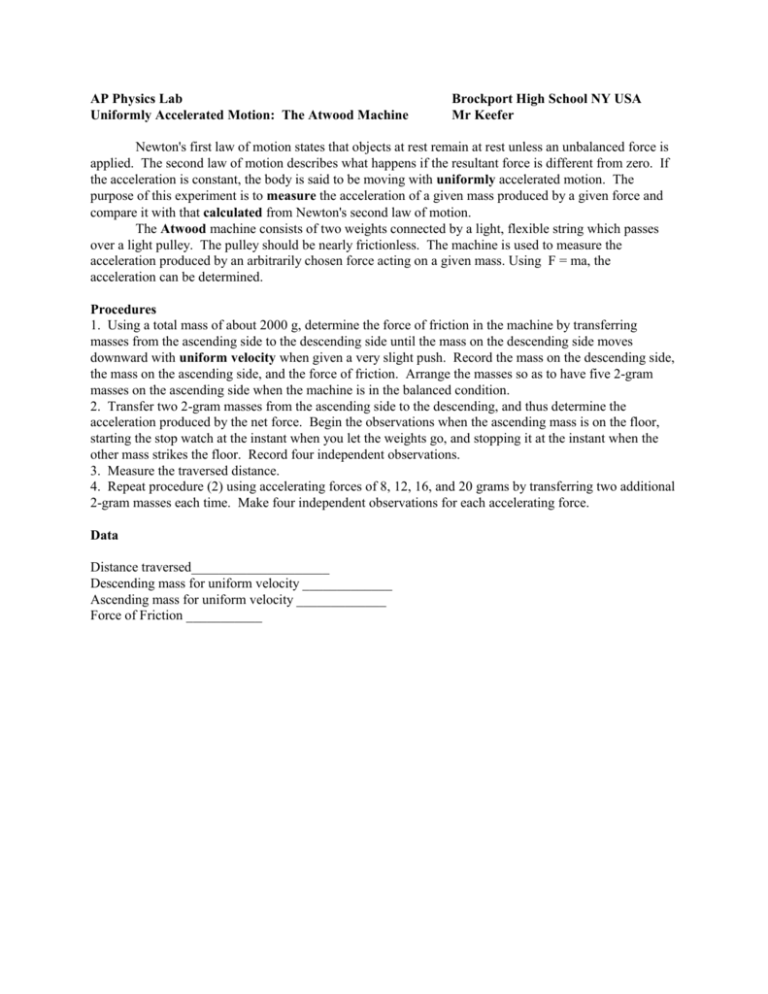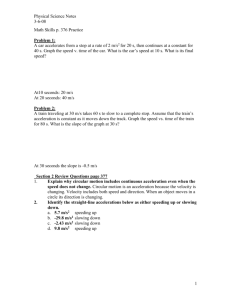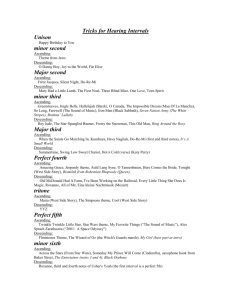The Atwood Machine
advertisement

AP Physics Lab Uniformly Accelerated Motion: The Atwood Machine Brockport High School NY USA Mr Keefer Newton's first law of motion states that objects at rest remain at rest unless an unbalanced force is applied. The second law of motion describes what happens if the resultant force is different from zero. If the acceleration is constant, the body is said to be moving with uniformly accelerated motion. The purpose of this experiment is to measure the acceleration of a given mass produced by a given force and compare it with that calculated from Newton's second law of motion. The Atwood machine consists of two weights connected by a light, flexible string which passes over a light pulley. The pulley should be nearly frictionless. The machine is used to measure the acceleration produced by an arbitrarily chosen force acting on a given mass. Using F = ma, the acceleration can be determined. Procedures 1. Using a total mass of about 2000 g, determine the force of friction in the machine by transferring masses from the ascending side to the descending side until the mass on the descending side moves downward with uniform velocity when given a very slight push. Record the mass on the descending side, the mass on the ascending side, and the force of friction. Arrange the masses so as to have five 2-gram masses on the ascending side when the machine is in the balanced condition. 2. Transfer two 2-gram masses from the ascending side to the descending, and thus determine the acceleration produced by the net force. Begin the observations when the ascending mass is on the floor, starting the stop watch at the instant when you let the weights go, and stopping it at the instant when the other mass strikes the floor. Record four independent observations. 3. Measure the traversed distance. 4. Repeat procedure (2) using accelerating forces of 8, 12, 16, and 20 grams by transferring two additional 2-gram masses each time. Make four independent observations for each accelerating force. Data Distance traversed____________________ Descending mass for uniform velocity _____________ Ascending mass for uniform velocity _____________ Force of Friction ___________ Suggested Data Tables Descending mass Net Force Ascending mass Ave. velocity Net Force 1 Final velocity 2 acceleration Time 3 4 a = F/m value Average % error Calculations 1. Compute the average time taken with each accelerating force. From the known distance and time taken in each case, compute the average velocity corresponding to each accelerating force. 2. Calculate the final velocity for each set of observations. 3. Calculate the acceleration produced by each accelerating force, from the values of the final velocity and the time. 4. Compute the theoretical value for the acceleration from Newton's second law of motion. Assuming this to be the correct value, compute the percent error of the observed value for each case. Questions for Discussion 1. Plot a graph of Force vs. mass. What does the slope represent? Describe the relation between force and acceleration observed in this experiment. 2. If you gave the system an initial velocity different from zero, how would this affect your result? 3. What is the advantage of transferring masses from one side to the other, instead of adding masses to one side?






